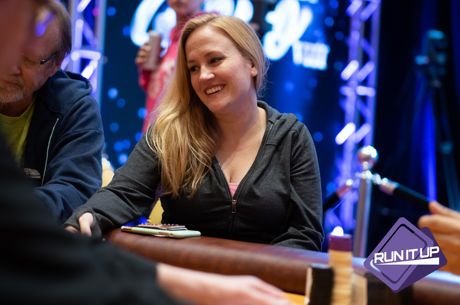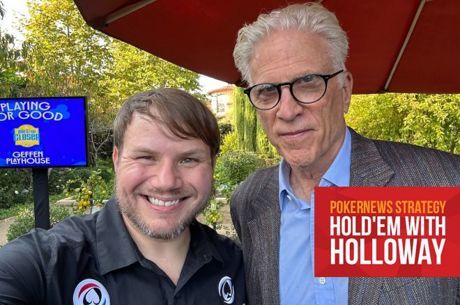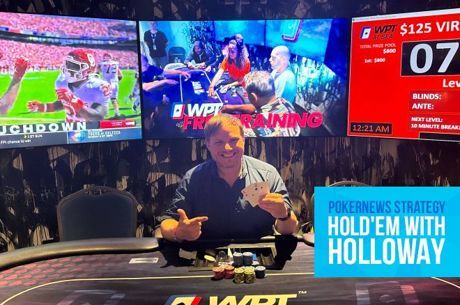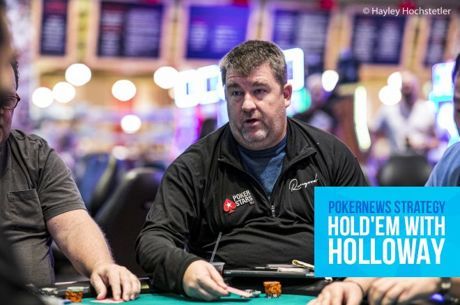Hold'em with Holloway, Vol. 110: Early-Stage Play in the Seminole Hard Rock Poker May Deep Stack
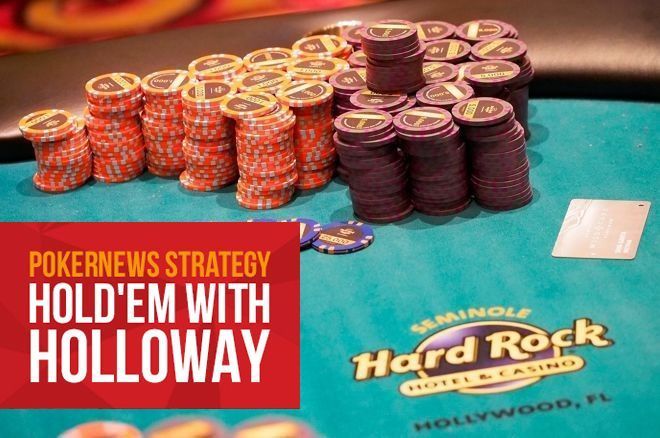
Table Of Contents
The Seminole Hard Rock in Hollywood, Florida really is one of my favorite poker destinations in the world. When the opportunity came about last week to head down and live report their three-tournament 2019 Seminole Hard Rock May Deep Stack Poker Series --you can still follow the action here — I eagerly jumped at the chance.
I actually covered the $350 Deep Stack NLH, a tournament that attracted 767 entries and created a $230,100 prize pool. It was a great-structured tournament starting players with 30,000 in chips and playing 40-minute levels on Day 1. Those would change to 60- and 75-minute levels later in the tournament.
Despite starting with stacks 300 big blinds deep, I saw plenty of mistakes being made and curious hands being played, especially during the early levels. Below are three hands that stuck out to me.
Hand #1 – In for a Penny, In for a Pound
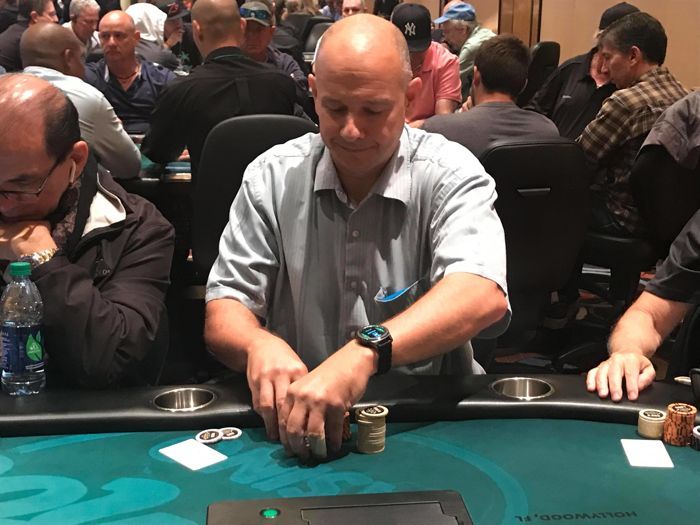
There's an old saying that "two wrongs don't make a right." This isn't always the case in poker as you can sometimes get lucky after compounding your mistakes. That wasn't the case, though, in the following hand from the Day 1b flight.
It took place during Level 6 (300/500/500) when I stumbled upon the action preflop with Paul Balzano, who had 4,400 out in front of him, debating what to do. Bernardo Picca had made it 20,000 to go from the cutoff and eventually Balzano called leaving himself just under 30K behind.
"I can't fault him for calling off his remaining chips after he committed so many preflop."
When the flop fell 5♣10♥Q♦, Balzano checked and Picca moved all in. Balzano had 29,400 back and didn't seem thrilled with the spot. He called off nonetheless.
Balzano: A♣Q♥
Picca: K♣K♠
Balzano had flopped top pair with top kicker but was still behind the overpair of Picca. Neither the 2♣ turn nor 3♣ river helped Balzano and he headed for the exit.
My Thoughts: While I wasn't familiar with Picca, his large raise struck me as extremely powerful. It did not seem to be the type of bet that said "I want you to fold," but rather "I'm ready to go to war." I think calling 40 percent of your stack preflop with ace-queen here out of position is way too sticky. What was Balzano's plan? If he missed the flop was he going to check-fold?
Things became compounded when he actually flopped top pair with top kicker. I can't fault him for calling off his remaining chips after he committed so many preflop, but he'd never had been in that position if he'd folded preflop.
As Kenny Rogers sang, "You've got to know when to hold'em, know when to fold'em." In my opinion, this was a spot to fold the ace-queen.
Hand #2 – This is Why You C-Bet
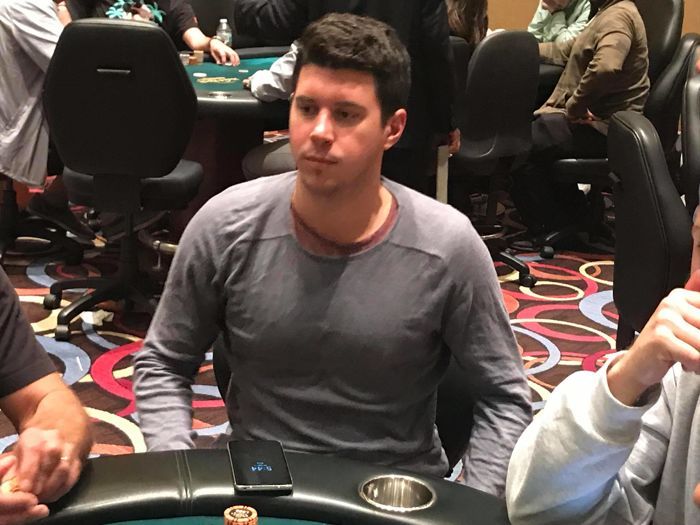
On Day 1b in Level 9 (500/1,000/1,000), the player in the hijack opened for 3,000 and action folded to 2015 World Series of Poker Main Event runner-up Josh Beckley who defended from the big blind.
Both players checked the 5♠8♣8♥ flop and the K♥ appeared on the turn. Beckley check-called a bet of 3,000 and the 7♣ completed the board on the river.
"This hand was a perfect example of why you should continuation bet often and liberally."
Both players returned to checking and the hijack tabled 9♦9♥. It was no good, though, as Beckley turned a bigger two pair with his K♣10♣.
My Thoughts: This hand was a perfect example of why you should continuation bet often and liberally, especially when in position. Had the original raiser c-bet after Beckley checked, it's almost certain he'd have won the pot right there.
And why not c-bet? What are you afraid of? Sure, Beckley might have an eight, but a call would raise a red flag. That's when he likely checks the turn and you check back to take the free card.
However, by checking back on the flop you give your opponent a free card, which in this case clearly benefitted Beckley. Instead of continuation betting the flop and winning a 7,500 pot, the original raiser wound up losing a 13,500 pot.
Hand #3 – Bold Bluff or Reckless Play?

In Level 3 (100/200/200) of the Day 1c flight, Errol Rosen raised to 800 from under the gun and the player in the cutoff called. Guillermo Hamilton came along from the button and the player in the small blind called as well to make it four-way action to the K♠K♥4♠ flop.
The small blind checked, Rosen continued for 1,700, and only Hamilton called to see the 6♣ turn. Rosen wasted little time in betting 3,300 and again Hamilton called.
When the A♠ completed the board on the river, Rosen moved all in for 21,000 and Hamilton asked, "Did I really get that coolered?"
"When the hand played out I thought Rosen had punted away a deep stack."
Hamilton then tossed in a call.
"I've got nothing," Rosen admitted before showing his 7♦7♠ for a little something. Hamilton then tabled K♦4♦ for a flopped full house and the win. Rosen shook hands with Hamilton before heading for the exit.
My Thoughts: As I write this I'm honestly not sure how I feel about Rosen's line in this hand. The preflop raise is fine, and the continuation bet on the flop is standard. However, when Hamilton just flats that board alarm bells should be going off — he's either got a king or flush draw.
Rosen firing again on the turn also seems okay. In the case his opponent does have a flush draw, he can represent the king. If his opponent has a king, maybe he'll raise and Rosen can get away from it. As it happened, Hamilton just called.
The river was interesting as it brought in the flush draw, but it was also the ace of spades. The way Rosen had played the hand there was a legitimate chance he had either pocket aces or Big Slick, and by moving all in he was going for max value. Would he really do that with a flush? It definitely put Hamilton in a tough spot. Had it been in a tournament with a buy-in bigger of $350, he might've even found the fold button.
When the hand played out I thought Rosen had punted away a deep stack, but upon further reflection, I've changed my mind. This was a bold bluff that just didn't work out for Rosen. Gotta admire the heart.



